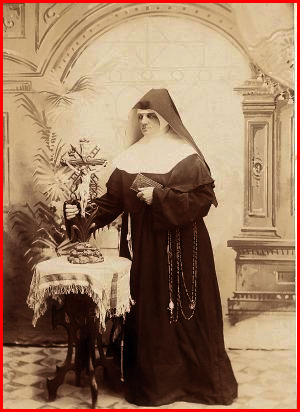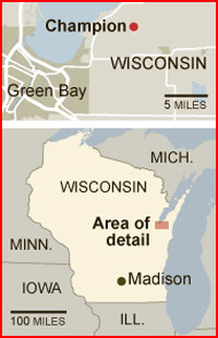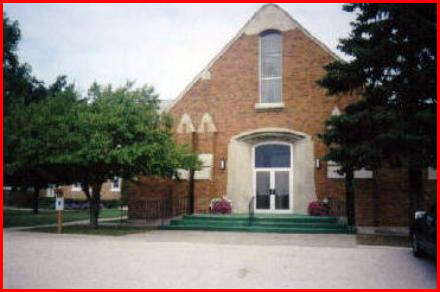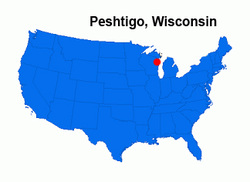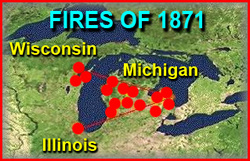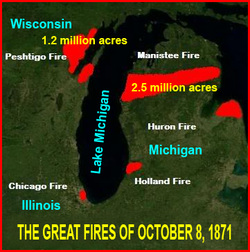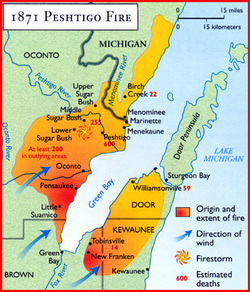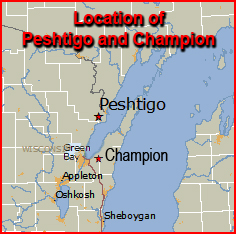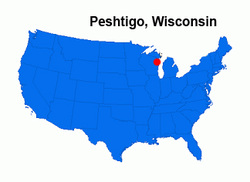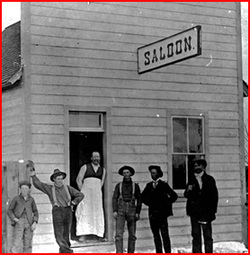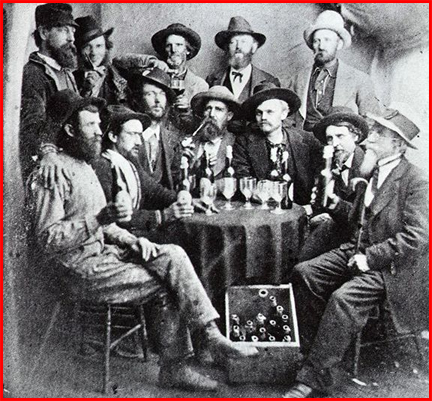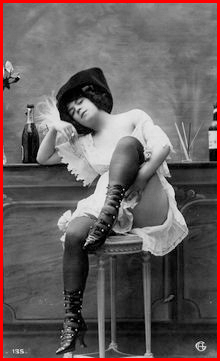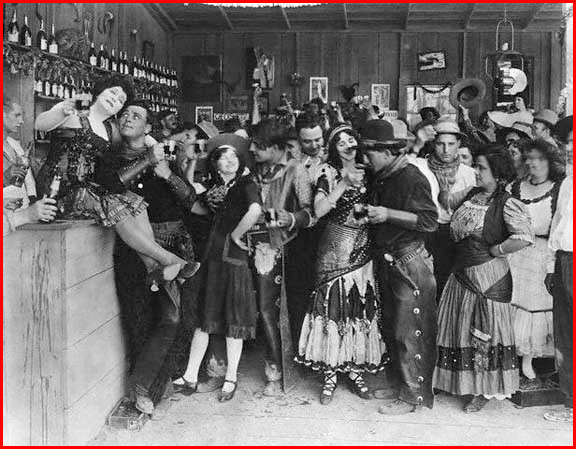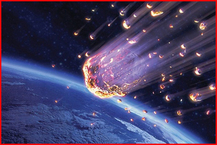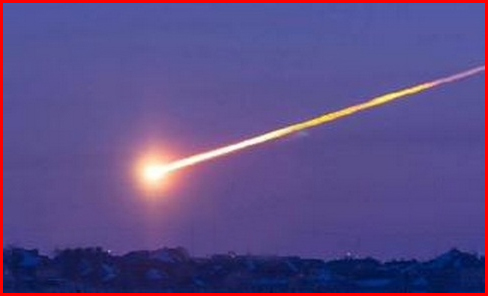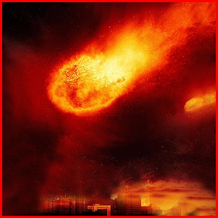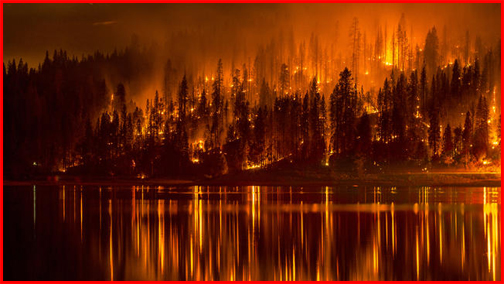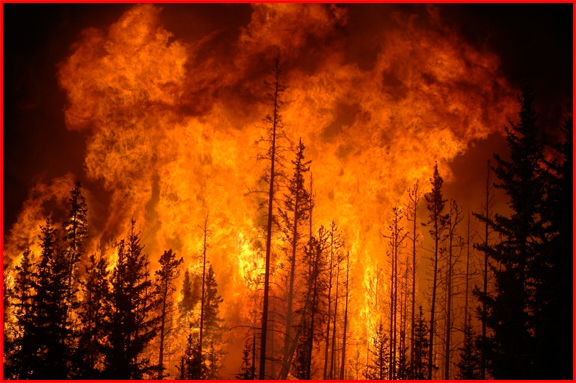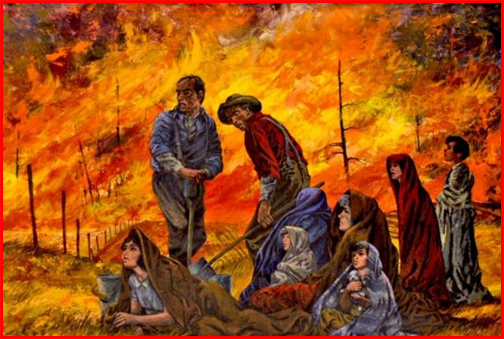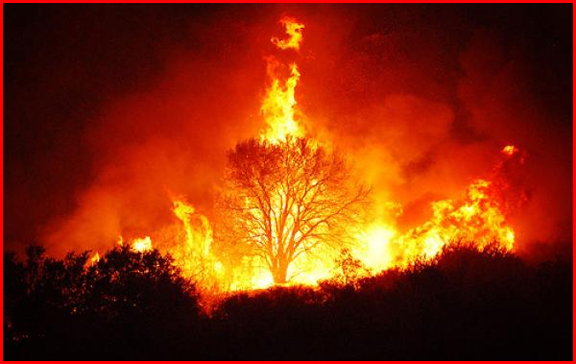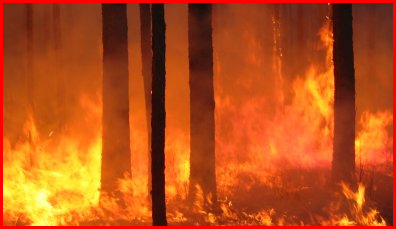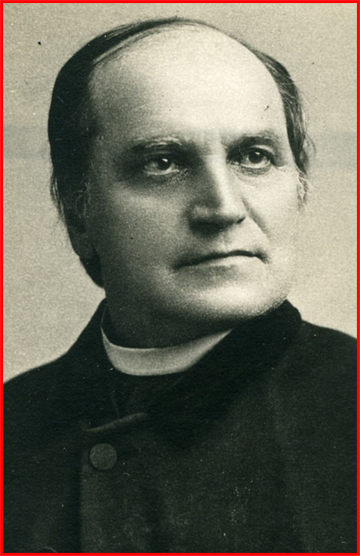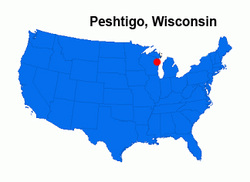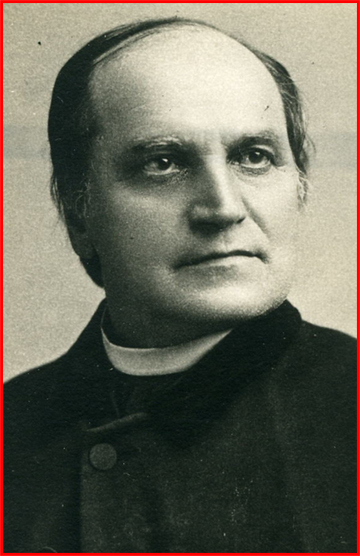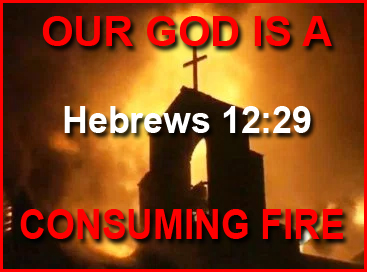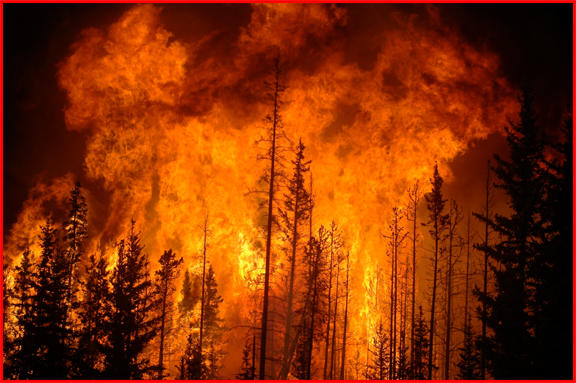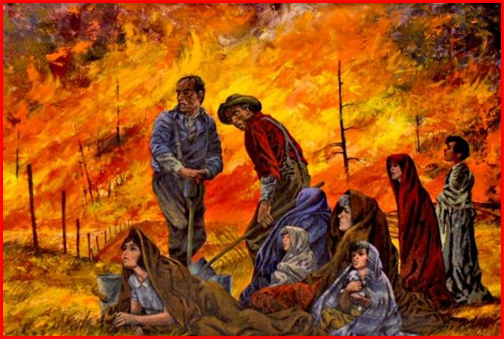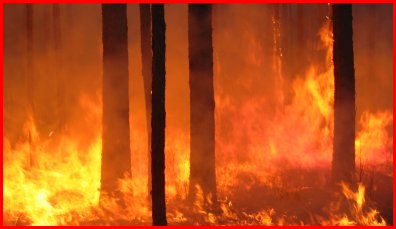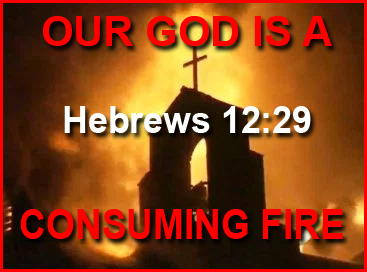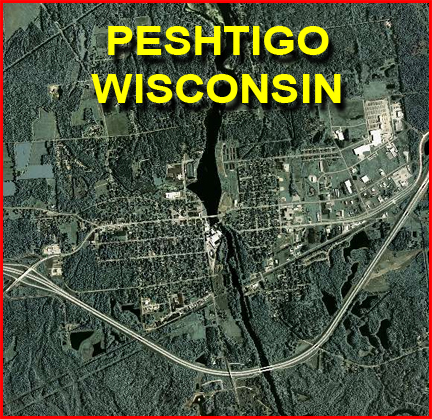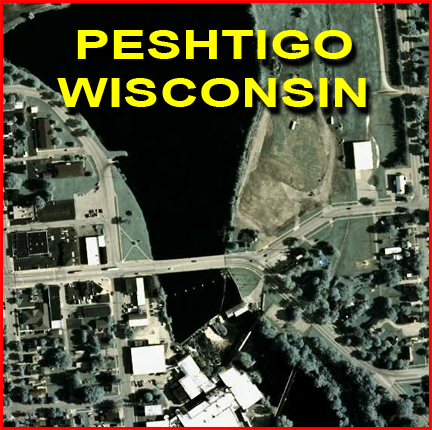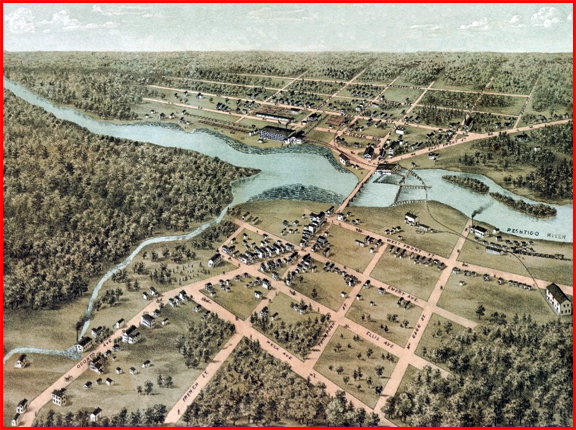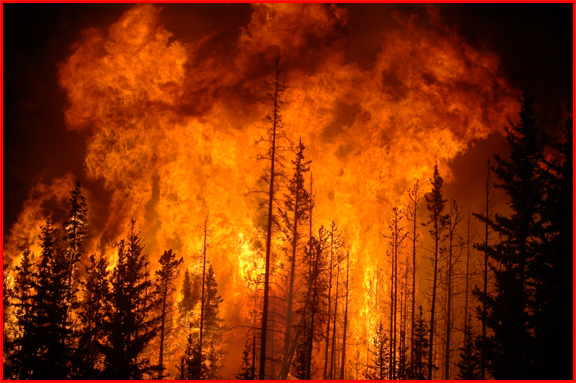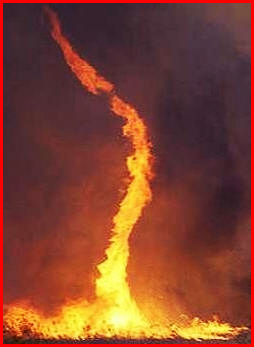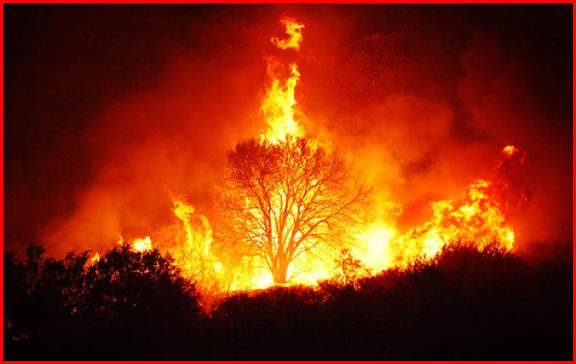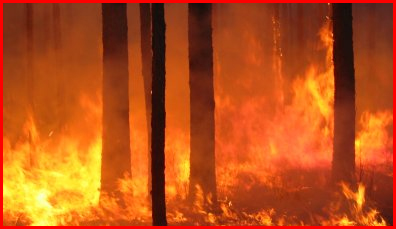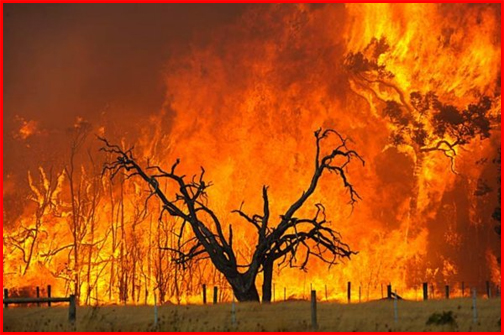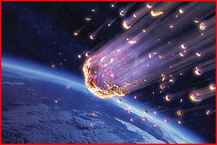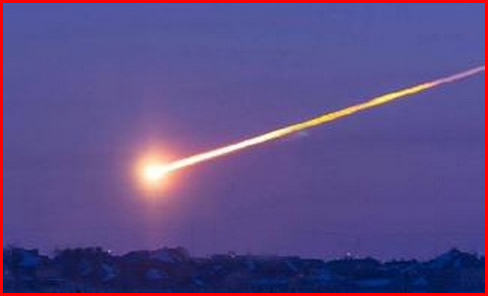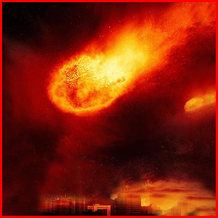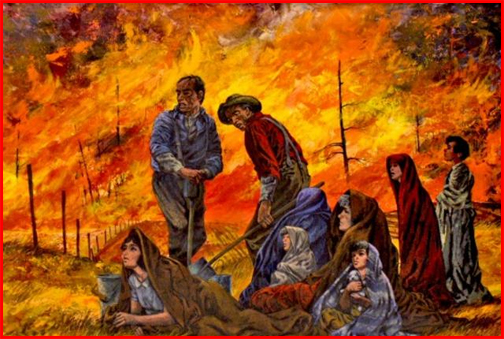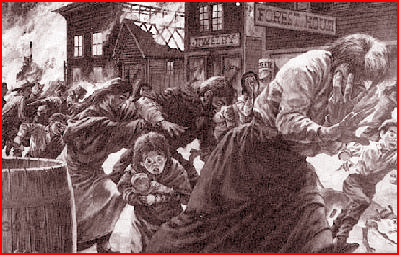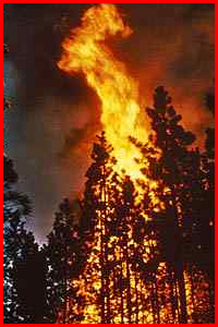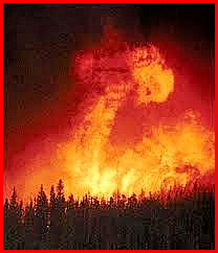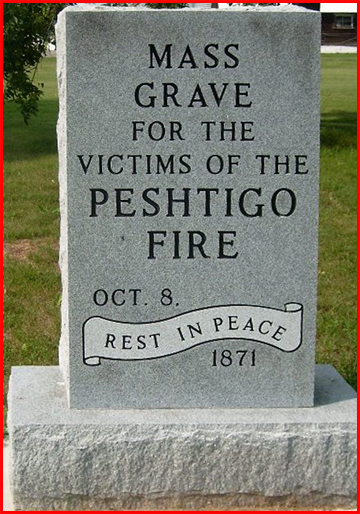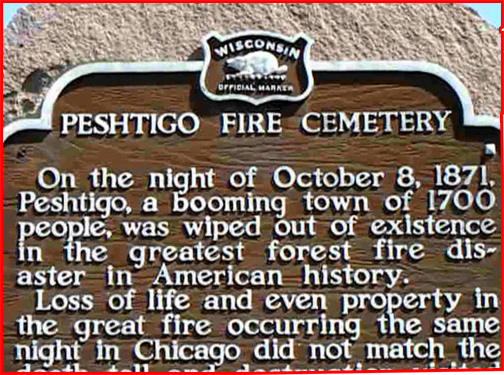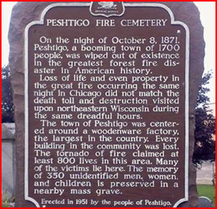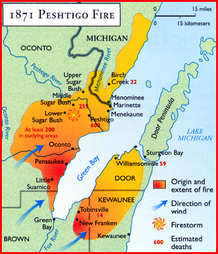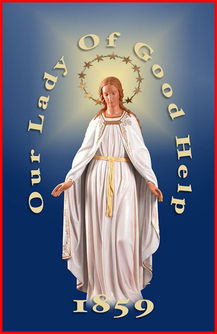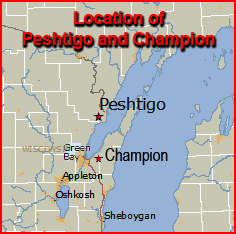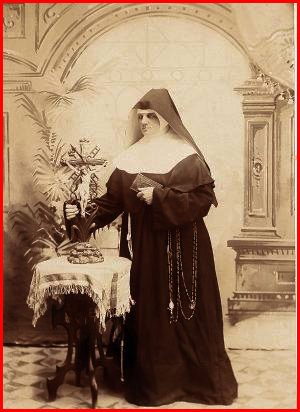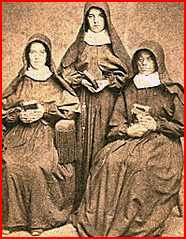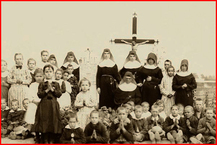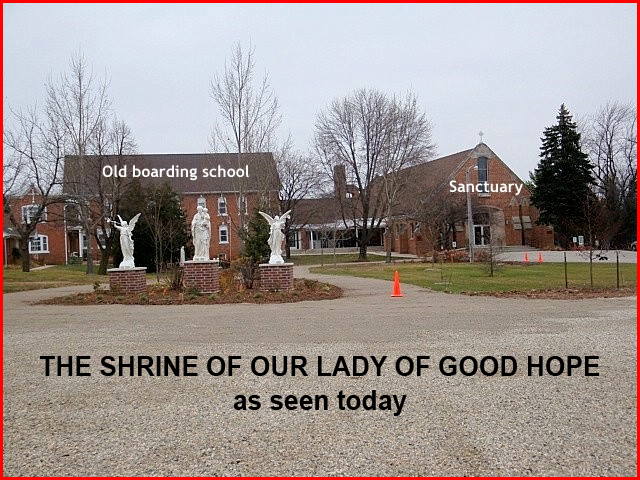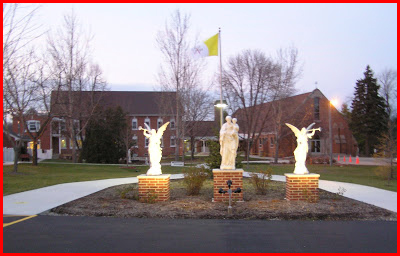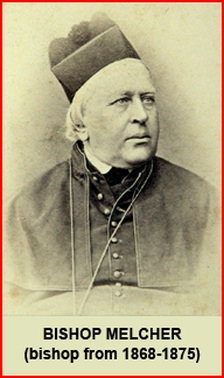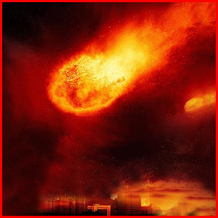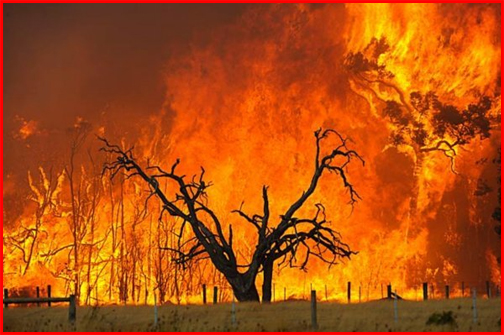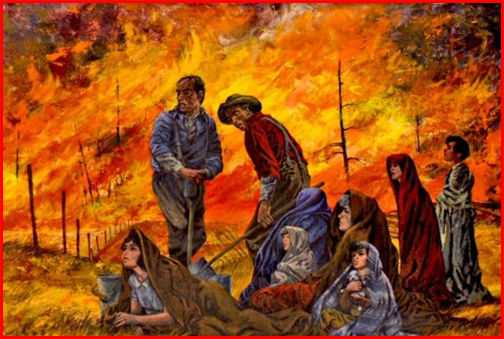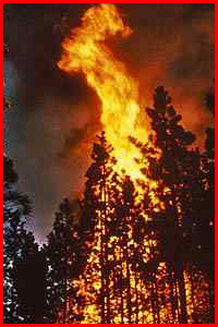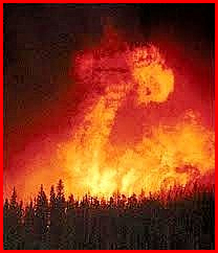| Devotion to Our Lady |
|
- Homepage
-
Daily Thoughts
- 2023 October Daily Thoughts
- Daily Thoughts Lent 2020
- Daily Thoughts for Advent 2019
- Daily Thoughts for October 2019
- Daily Thoughts for September 2019
- Daily Thoughts for August 2019
- Daily Thoughts for July
- Daily Thoughts for June
- Daily Thoughts for Easter 2019
- Daily Thoughts for Lent 2019
- Daily Thoughts for Christmas
- Daily Thoughts Easter 2022
- Sacred Heart
- Holy Ghost
-
Spiritual Life
- Holy Mass Explained
- First Friday Devotions
- First Saturday Devotions
- The Mercy of God
- Vocations
- The Path Everyone Must Walk >
- Gift of Failure
- Halloween or Hell-O-Ween?
- Ignatian Spiritual Exercises >
- Meditation is Soul-Saving
- Spiritual Communion
- Miraculous Medal
- Enrollment in Miraculous Medal
- St. Benedict Medal
- Holy Water
- Advice on Prayer
- Your Daily Mary
-
Prayers
- September Devotions
- Seven Sorrows of Our Lady
-
Novenas
>
- NV-Help of Christians
- NV-Nativity of Our Lady
- NV-Seven Sorrows
- NV- Sorrowful Heart
- NV-Pope St Pius X
- NV-La Salette
- NV-St Michael Archangel
- NV-Immaculate Heart
- NV-Assumption
- NV-Novena for Fathers
- NV-Novena for Your Mother
- NV-St Raphael Archangel
- NV-Souls in Purgatory
- NV-All Saints Day
- NV-Christ the King
- NV-Divine Motherhood
- NV-Guardian Angels
- NV-Rosary
- NV-Mirac Med
- NV- Imm Conc
- NV - Guadalupe
- NV - Nativity of Jesus
- NV-Epiphany
- NV-OL Good Success
- NV-Lourdes
- NV-St Patrick
- NV-St Joseph
- NV-Annunciation
- NV-St Louis de Montfort
- NV-OL Good Counsel
- NV-Last Supper
- NV-Passion
- NV-Pentecost
- NV-Ascension
- NV-Sacred Heart
- NV-Sacred Heart & Perpetual Help
- NV-Corpus Christi
- NV-OL of Perpetual Help
- NV-Queenship BVM
- NV-OL of Mount Carmel
- NV-St Mary Magdalen
- NV- Im Hrt
- August Devotions to IHM
- Immaculate Heart of Mary
- Litany of Dependence
- Prayers to St Mary Magdalen
- Prayers in Times of Sickness Disease & Danger
- Holy Souls in Purgatory
- Meditations on the Litany of Our Lady
- Special Feast Days
- Prayers to Mary (Mon-Sun)
- Litanies to Our Lady >
- Various & Special Needs
- Our Lady of the Rosary
- Our Lady of Mt. Carmel
- Our Lady of Perpetual Help
- Our Lady of Guadalupe
- Other titles of Our Lady
-
Rosary
- Downloads
- Consecration
- Easter Season
-
Holy Week
- Last Seven Words of Jesus >
- Characters of Passion >
- The Last Days of Christ
- Before Palm Sunday
- Palm Sunday
- Monday in Holy Week
- Tuesday in Holy Week
- Wednesday in Holy Week
- Holy Thursday (Last Supper)
- Holy Thursday (Agony & Arrest)
- Night Vigil with Christ
- Good Friday (Pilate & Herod)
- Good Friday (Way of Cross & Crucifixion)
- Saturday in Holy Week
-
Lent
- Ideas for Lent
- Daily Lenten Planner
- Daily Lenten Liturgy
- From Cold to Hot
- Lent with Aquinas
- Lent with Dom Gueranger
- Virtues for Lent
- History of Penance
- How Expensive is Sin?
- Confession of Sins
- Letter to Friends of the Cross
- Sermons for Lent
- Stations of the Cross >
- Lenten Prayers
- 7 Penitential Psalms
- Lenten Psalms SUN
- Lenten Psalms MON
- Lenten Psalms TUE
- Lenten Psalms WED
- Lenten Psalms THU
- Lenten Psalms FRI
- Lenten Psalms SAT
- Lenten Laughs
- Septuagesima
-
Christmas
- Epiphany Explained
- Suggestions for Christmas
- Food For Thought
- Christmas with Aquinas
- Christmas with Dom Gueranger
- Christmas Prayers
- Candles & Candlemas
- Christmas Sermons
- Christmas Prayers SUN
- Christmas Prayers MON
- Christmas Prayers TUE
- Christmas Prayers WED
- Christmas Prayers THU
- Christmas Prayers FRI
- Christmas Prayers SAT
- Twelve Days of Christmas >
-
Advent Journey
- Purgatory
- Christ the King
- Legion of Mary
- Scapular
-
Saints
-
Martyrs for the Faith
>
- Your Daily Martyr >
- All 365 Days of Martyrs
- Cristeros
- St Valentine & Valentine's Day
- Martyrs--Thomas Becket
- Martyrs--John the Apostle
- Holy Machabees
- Age of Martyrdom
- Carmelites of Compiegne
- Martyrs--Peter & Paul
- Martyrs--John the Baptist
- Martyrs--Andrew
- Martyrs--James the Great
- Martyrs--North American
- Martyrs--Seven Holy Sleepers
- Martyrs--Afra
- School of Martyrdom
- Martyrs--Christina
- Desert Saints >
- Saints for Sinners >
- Saints of Mary >
- History of All Saints Day
-
Martyrs for the Faith
>
- Precious Blood
- Synod 2023
-
Catechism
- Catechism Lesson 1
- Catechism Lesson 2
- Catechism Lesson 3
- Catechism Lesson 4
- Catechism Lesson 5
- Catechism Lesson 6
- Catechism Lesson 7
- Catechism Lesson 8
- Catechism Lesson 9
- Catechism Lesson 10
- Catechism Lesson 11
- Catechism Lesson 12
- Catechism Lesson 13
- Catechism Lesson 14
- Catechism Lesson 15
- Catechism Lesson 16
- Catechism Lesson 17
- Catechism Lesson 18
- Catechism Lesson 19
- Catechism Lesson 20
- Catechism Lesson 21
- Catechism Lesson 22
- Bible Study
-
Calendar
- Miracles
- Apparitions
- Shrines
- Prophecies
- Angels Homepage
- Hell
-
Church Crisis
- Conspiracy Theories
- Amazon Synod 2019 >
- Liberalism & Modernism
- Modernism--Encyclical Pascendi
- Modernism & Children
- Modernism--Documents
- The Francis Pages
- Church Enemies on Francis
- Francis Quotes
- Amoris Laetitia Critique
- Danger of Ignorance (Pius X)
- Restore all In Christ (Pius X)
- Catholic Action (Pius X)
- Another TITANIC Disaster?
- The "Errors of Russia"
- CRISIS PRAYERS
- Election Novena 2024
- The Anger Room
- War Zone
- Life of Mary
- Spiritual Gym
- Stupidity
- Coronavirus and Catholicism
- History & Facts
- Books
- Catholic Family
- Children
- Daily Quiz
-
Novena Church & Pope
- Day 01 Church-Pope Novena
- Day 02 Church-Pope Novena
- Day 03 Church-Pope Novena
- Day 04 Church-Pope Novena
- Day 05 Church-Pope Novena
- Day 06 Church-Pope Novena
- Day 07 Church-Pope Novena
- Day 08 Church-Pope Novena
- Day 09 Church-Pope Novena
- Day 10 Church-Pope Novena
- Day 11 Church-Pope Novena
- Day 12 Church-Pope Novena
- Day 13 Church-Pope Novena
- Day 14 Church-Pope Novena
- Day 15 Church-Pope Novena
- Day 16 Church-Pope Novena
- Day 17 Church-Pope Novena
- Day 18 Church-Pope Novena
- Day 19 Church-Pope Novena
- Day 20 Church-Pope Novena
- Day 21 Church-Pope Novena
- Day 22 Church-Pope Novena
- Day 23 Church-Pope Novena
- Day 24 Church-Pope Novena
- Day 25 Church-Pope Novena
- Day 26 Church-Pope Novena
- Day 27 Church-Pope Novena
- Day 28 Church-Pope Novena
- Day 29 Church-Pope Novena
- Day 30 Church-Pope Novena
- Day 31 Church-Pope Novena
- Day 32 Church-Pope Novena
- Day 33 Church-Pope Novena
- Day 34 Church-Pope Novena
- Day 35 Church-Pope Novena
- Day 36 Church-Pope Novena
- Day 37 Church-Pope Novena
- Day 38 Church-Pope Novena
- Day 39 Church-Pope Novena
- Day 40 Church-Pope Novena
- Day 41 Church-Pope Novena
- Day 42 Church-Pope Novena
- Day 43 Church-Pope Novena
- Day 44 Church-Pope Novena
- Day 45 Church-Pope Novena
- Day 46 Church-Pope Novena
- Day 47 Church-Pope Novena
- Day 48 Church-Pope Novena
- Day 49 Church-Pope Novena
- Day 50 Church-Pope Novena
- Day 51 Church-Pope Novena
- Day 52 Church-Pope Novena
- Day 53 Church-Pope Novena
- Day 54 Church-Pope Novena
- Penance Novena
- Daily WeAtheR Forecast
OUR LADY OF GOOD HELP
and the Great Fires of 1871
and the Great Fires of 1871
The articles are shown in chronological order with the latest article being at the bottom of the page
|
Article 1
The Apparition of Our Lady of Good Help in the USA in 1859 scroll down to the bottom of the page for the latest article Before we come to the Great Fires that struck Wisconsin, Michigan and Chicago on October 8th, 1871, let us back track to October 1859, when Our Lady appeared to a young, 28-year-old Belgian immigrant to the US, at Champion, Wisconsin.
With approval from Bishop David L. Ricken of Green Bay, Wisconsin, a chapel in the town of Champion is now the first approved Marian apparition site in the United States. On December 8th, 2010 – the Feast of the Immaculate Conception Bishop David L. Ricken of Green Bay, Wisconsin, decreed with “moral certainty” that the Virgin Mary had indeed appeared to a young Belgian immigrant woman, Adele Brise, on three occasions in October of 1859. Since 1861, the site of those apparitions has been home to a chapel dedicated to the Virgin Mary under her title “Our Lady of Good Help.” Following a two-year investigation of the alleged apparitions, Bishop Ricken proclaimed them “worthy of belief,” and confirmed his diocese’s official recognition of the already popular shrine that has drawn pilgrims for over 150 years. During each of those three apparitions, a lady in shining white clothes appeared to Adele. The third time, she identified herself as “the Queen of Heaven who prays for the conversion of sinners.” “I wish you to do the same,” she told the 28-year-old Adele, who had intended to become a nun, before coming to America. Adele and her family lived on a small homestead in Wisconsin, which had become a U.S. state only 11 years earlier. The Virgin Mary also gave her a mission of evangelism and catechesis: “Gather the children in this wild country, and teach them what they should know for salvation … Go and fear nothing. I will help you.” There were hardly any priests in the area, yet thousands of Catholic Belgian immigrants came annually to the area. Many had grown indifferent to the Faith and were no longer practicing their Faith. Our Lady wanted to intervene and help restore the ailing and failing Faith. Adele Brise went on to become a Third Order Franciscan. She traveled throughout the frontier state giving religious instruction to children and adults, striving to fulfill the heavenly mandate. Her work was especially important at a time when Wisconsin severely lacked priests, and simply attending church could involve a strenuous journey. Near the chapel, her community of Franciscan women also established a school. When a fire ravaged the area near the apparition site in 1871, the chapel and school were the only buildings left standing, along with their convent and a surrounding area of land consecrated to the Virgin Mary. In 1890, six years before she died, Sister Adele’s adopted hometown of Robinsonville renamed itself after the Belgian town of Champion. The Franciscan sister had asked for the change, in honor of a childhood promise she had made to the Virgin Mary to enter a Belgian religious order in that region. Bishop Ricken said that Sister Adel’s own life was among the most convincing testimonies to the validity of the apparition. Rather than calling attention to herself or the apparitions, she had humbly devoted the rest of her life to fulfilling the instructions she had received. “She went all over this area, and visited the homes that were scattered far and wide,” Bishop Ricken said, recounting the sister’s Franciscan spirit of humble simplicity. “She walked most of the time, and she would spend several days with the children, teaching them the catechism and talking with the parents about their Faith. She really had an evangelistic spirit … and lived that out, not just immediately after the message, but her whole life long.” Bishop Ricken said the simplicity and clarity of Our Lady’s message also testified to the truth of the apparitions. Her instructions to Sister Adele were “simple, but very much loaded with the main message of the Gospel and with the teachings of the Church.” The bishop also recalled discovering “countless stories of answered prayers,” including reports of “what many claim to miracles,” among those who had visited the shrine to seeking intercession from Our Lady of Good Help. Although the bishop’s approval of the apparitions is new, his recognition of the chapel’s status as a diocesan shrine simply confirms what pilgrims have implicitly understood about the sacred place for over 150 years. Bishop Ricken explained that he has heard “story after story” of “incredible” cures and conversions – and understands that the events of October 9th, 1859 are still having life-changing effects among the faithful. Like the famous French apparition site at Lourdes, the shrine in Champion has a collection of crutches that pilgrims have discarded as unnecessary after receiving healing there. |
|
Article 2
The Start of the Great Fires of 1871 Our Lady's Ominous Message to Adel Brise
Besides telling Adele that she must go and catechize the children of that ever-increasingly lukewarm and non-practicing area of Wisconsin, Our Lady had also ominously added: “I am the Queen of Heaven, who prays for the conversion of sinners, and I wish you to do the same. You received Holy Communion this morning, and that is well. But you must do more ... Make a general confession and offer Holy Communion for the conversion of sinners. If they do not convert and do penance, my son will be obliged to punish them.” What For? This is the appearance during which Mary forewarned of a disaster―a punishment by her Son―if men did not return from the worldliness, lukewarmness, indifference and a falling-away from practicing the Faith that they had embraced. It was a prediction that was followed―almost to the day, twelve years later―by an incredible fire that burned 1.2 million acres and roared at some point across this part of Wisconsin as well 2.5 million acres in Upper Michigan, at heights reaching a mile, with more heat than a crematorium, estimated to have been around 2,000 degrees hot. Where From? Some say it was caused by loggers, others hunters, others rail workers; the terrain was unusually dry from drought; still others have posited that it was sparked by the breakup of the Comet Biela (for this wildfire, the greatest in U.S. history, started at the same time as the great Chicago fire two hundred miles to the south, a fire whose origin is likewise mysterious, at least to some historians) and at the same time as an even bigger fire in Upper Michigan.. The fire roared right up to a chapel fence at the site of apparitions and stopped, leaving it as an emerald oasis in the sea of ashes, as they put it. Mysterious Flames "Much has been said of the intense heat of the fires which destroyed Peshtigo, Menekaune, Williamsonville, and other towns, but all that has been said can give the neutral stranger only a faint conception of the reality," said one survivor. “The heat has been compared to that engendered by a flame concentrated on an object by a blow-pipe; but even that would not account for some of the phenomena. For instance, we have in our possession a copper cent taken from the pocket of a dead man in the Peshtigo Sugar Bush, which will illustrate our point. This cent has been partially fused, but still retains its round form, and the inscription upon it is legible. Others, in the same pocket, were partially melted, and yet the clothing and the body of the man were not even singed. We do not know in what way to account for this, unless, as is asserted by some, the tornado and fire were accompanied by electrical phenomena.” Causes? Human or Divine? What caused the Chicago fire? And what caused the mystery of Peshtigo with those hurricane heat winds, and those fire tornadoes? “The fire arrived, not as a wave or a surge of flame,” said another witness, “but as though it suddenly dropped from the sky.” And added a third: “It came in great sheeted flames from Heaven. The atmosphere was all afire.” As the philosophical axiom says: “Whatever is received, is received according to the mode of the receiver.” Which means that an atheist will see things his way, whereas a believer will see things his way, a Modernist will see things his way, an agnostic will see things his way. Science will try explain things naturally, Faith will try explain things supernaturally, but without excluding the natural as aiding and abetting. Let us remember there is still no final explanation for the fires that destroyed Gomorrah and Sodom. Fire came from Heaven, but exactly how, we do not know. God does as He wills, when He wills, and with whatever means He chooses to use. Where “Boom-Towns” Abound, Sin Abounds Peshtigo, the lumber “boom-town” that was hit the hardest by the Wisconsin Fires, was a hotbed of sin. Workers bring saloons and prostitutes to any boom town (some counts say over 60 came to Peshtigo). Father Peter Pernin, the Catholic priest assigned to Peshtigo’s St Mary’s parish and Our Lady of Lourdes in Marinette (besides additionally serving other smaller communities), wrote about how 200 young men had arrived in town that Sunday morning, to work on the railroad. How the taverns had been crowded all day “with revelers”. Father noted, in his account of the disaster, that “Perhaps they had passed the holy time of Mass, drinking and carousing there.” He continued, “their intoxicated condition caused quarreling, wrestling, wild shouts and horrid blasphemies.” |
|
Article 3
The Fire of Peshtigo! Man-Made or Heaven Sent? Do Not Be Deceived! God Is Not Mocked!
To situate these events, we can note that Our Lady's 1859 apparition, to Adele Brise, was on brink of the outbreak of the American Civil War (1861-1965) and the Great Fires of 1871, therefore, were just a few years after the end of the Civil War. At her third and final apparition to Adele Brise, on October 8th, 1859, Our Lady had said: “I am the Queen of Heaven, who prays for the conversion of sinners, and I wish you to do the same. You received Holy Communion this morning, and that is well. But you must do more ... Make a general confession and offer Holy Communion for the conversion of sinners. If they do not convert and do penance, my son will be obliged to punish them.” Peshtigo, the lumber “boom-town” that was hit the hardest by the Wisconsin Fires, was a hotbed of sin. Workers bring saloons and prostitutes to any boom town (some counts say over 60? each came to Peshtigo). Father Peter Pernin, the Catholic priest assigned to Peshtigo’s St Mary’s parish wrote after the Great Fire, that about how 200 young men had arrived in town that Sunday morning, to work on the railroad. How the taverns had been crowded all day “with revelers”. Father noted, in his account of the disaster, that “Perhaps they had passed the holy time of Mass, drinking and carousing there.” He continued, “their intoxicated condition caused quarreling, wrestling, wild shouts and horrid blasphemies.” From whence did all this come? Let us rewind forty or so years, to 1830’s—around 30 years before Our Lady’s apparition. At that time there was not even a town on the map! Lots of Mammon, Little God―The Making of a “Boom Town” For the first 20 years of its existence, Peshtigo was called Clarksville. Fertile farm land was up for grabs. The soil was good and there was lots of water, but the short growing season and heavily timbered terrain made farming a challenge. Then came the lumbermen. The first sawmill opened in 1836. The early ones were small family-owned operations. Farming, trapping, hunting and exploring shared the woods with them. There was plenty to go around. By the 1850’s, the country’s insatiable need for lumber had cut down the forests of New England, New York and Pennsylvania. The industry looked west for new sources. They found them in Michigan and Wisconsin. Lumber became the cash crop of the north woods, especially the white pine. It grew up to 170 feet tall and six feet in diameter. Perfectly straight, with no branches for the first 3/4 of the tree, it could be felled, topped and sent straight to the mills. A good sized house could be built from one tree ― and there were a billion of them waiting to be harvested. The Peshtigo River was integral to the success of the town’s growing lumber industry, flowing to its mouth on the Green Bay, six miles below the town and its mills. Dropping over 1,000 feet in elevation along the way, it was the wildest river in Wisconsin. Its fast, free-flowing water became a natural slough for the pine logs. If they got tangled up in the winding river, a little dynamite would fix the problem. In 1856, a financial powerhouse, from “back East”, named William Butler Ogden came to Clarksville (Peshtigo). He had already amassed a fortune in lumber and railroads. Along the way, he had built much of Chicago, 20 years earlier, and served as its first mayor. Ogden knew a thing or two about potential and risk-taking. He took note of the abundant untapped resources in the area and decided he was “all in”. The Peshtigo Company was born. Clarksville became Peshtigo in 1858 and took off. By 1871, the year of the fire, it was a full-fledged boomtown. It had sawmills, grist mills, banks, stores, hotels, stables, a schoolhouse and three active church congregations―plus the saloons and prostitutes. There was Ogden’s Woodenware Company. It made all kinds of wooden tools and implements ― barrels, pails, clothes pins, axe handles and more. It was the largest factory of its kind in the country. A new bridge spanned the river in town. A dam was built to power the new mills. Six miles downstream at the mouth of the river, a harbor facility was built on the bay and a new town sprang up ― Peshtigo Harbor. Steamships from Green Bay, Milwaukee and Chicago arrived at the docks weekly. This transportation link would prove crucial after the fire. Ogden built a railroad between the two towns and the harbor, going along the northeast side of the river. Spurs were being built into the woods to bring the lumber out of the camps. Another railway from Green Bay was nearing completion, with the goal of augmenting and eventually replacing the need for water transportation on the treacherous Great Lakes. Another line to nearby Marinette, WI and its sister city of Menominee, MI was in the works. Despite Ogden’s huge stake and presence in the town, entrepreneurship flourished. There were many independent shops, craftsmen and professionals. There were also several dozen saloons and brothels to entertain the lumberjacks, who were mostly single and worked 12 hours a day six days a week no matter what the weather. It was hard and dangerous work. On average, one lumberjack a day was killed on the job. In the summer of 1871, Peshtigo was dirty, rowdy, noisy and prosperous with seemingly limitless potential―and sinful. Dozens of people arrived every week on the steamboats including a boatload of 200 the day before the fire. Most of the newbies were Scandinavian immigrants seeking work and their little piece of this “Eden of the North.” However, the seeds of its destruction were already planted and growing. A Deadly Mix of Mammon and Nature There has been much discussion about the causes of the Great Fires of 1871—some say they were basically caused by the poor safety habits of the people. Others say the Great Fires were caused by a comet or meteorites. Considering that much of the area was Protestant or non-believing, then the warning of the Catholic Blessed Virgin Mary would be far from their minds in reasoning on the possible causes of the Great Fires. The Providence of God does not always have to perform miracles when executing punishments, God can also leave mankind to itself and withdraw His protective Providence from them. In fact, one of the worst things that God can do is to leave man to himself and by himself. Fire was always an important part of life on the frontier and Peshtigo was no exception. Fire was used to clear land, burn brush, dispose of refuse, cook food, heat homes and fuel machinery. Hunters, trappers, lumberjacks, farmers and Native Americans built fires daily. Railroads, steamboats and sawmills put out sparks. Even the bullets used for hunting had a sizable fire signature. There was fire everywhere in the north woods. People there could not have existed without it. They viewed fire as people in Florida view hurricanes ― it goes with the territory. Most fires were left unattended. Occasionally, one would spread and burn several trees or several acres. Sometimes they were put out, but mostly they were ignored. In normal times these fires extinguished themselves in the damp, dark, windless forest. But these were not normal times. The winter of 1870-71 was almost devoid of snow. Instead of the usual four to five feet, they got almost none. The spring rains came and went early. The last good soaking happened on July 8th. The only precipitation after that was a light sprinkle on September 16th. The bogs dried out. Leaves and pine needles, from stressed trees, fell early and thickly carpeted the forest floor. Bark and branches at lumber sites dried out as did the sawdust at the mills. The river flow was way down and had a major effect on lumbering operations. Lumber camp bosses had to stack their timber on site, because the water flow wasn’t enough to move them downstream. At the mills, there was no dumping of sawdust into the water, because it just sat there due to the shallowness of the water and slowness of flow. Huge piles of sawdust were everywhere. It was poured in the streets, under porches and sidewalks, in gardens and flower beds, even stuffed in mattresses. Other fuel was adding to the deadly mix. The mills and the railroad had large quantities of industrial cleaners, lubricants, wood treatment and paint. The peat bogs contained highly flammable methane gas, a natural byproduct of carbon decomposition. Usually held in by moisture, the parched bogs emitted methane that swirled in the atmosphere for weeks. The entire north woods was turning into a bone dry tinderbox, but the burning continued. Now, instead of dying out on their own, the fires went dormant. They smoldered under the fuel on the ground and consumed the roots of trees. In the peat bogs, coals could smolder as much as five feet down. Sparks and hot coals were a constant threat. People traveling the roads at night saw red coals glowing and tiny flames sputtering in the dark. Fires began erupting with increasing size and frequency. The residents of Peshtigo began to wonder how safe was the town, Could a Comet and Meteorites Have Played a Part? Theories for the fires are many ― but one thing is certain, the devouring flames showed up at the same time. Most historians point to the dry weather of the summer and the poor logging practices of the day for creating conditions ripe for a hot dry wind from the southwest that blew into the area whipping up small fires already smoldering and carrying destruction through the state. Yet for the same thing to happen on the other side of Lake Michigan, in the State of Michigan, on exactly the same night seems a little strange for it to be brushed away as being merely coincidental. Consider a statement by the Detroit Post on October 10th, 1871: “In all parts of the state, as will be noticed by our correspondence during the past few days and also today, there are numerous fires in the wood, in many places approaching so near to towns as to endanger the towns themselves.” In Holland, fire destroyed the city, in Lansing flames threatened the agricultural college and in the Thumb, farmers trying to establish homesteads soon would be diving into shallow wells to escape an inferno some newspapers dubbed: “The Fiery Fiend.” Many did not escape. Fires threatened Muskegon, South Haven, Grand Rapids, Wayland and reached the outskirts of Big Rapids. A steamship passing the Manitou Islands reported they were on fire. One theory speculates that a meteor struck the countryside near the town. Weather historians, using records and archives, have offered a plausible theory for this. Meteorite falls in Autumn are fairly common in the upper great lakes region, occasionally sparking fires in dry fields and wooded areas. In recent years these showers have left burning meteorite chunks scattered over the entire region, sometimes large enough to break through the roofs of homes. With such dry weather near Peshtigo, it would have been a perfect location for a fire to build up after one had set the ground ablaze. In the month of the Perseid Meteor shower, it is interesting to ponder if a disintegrated comet be the cause of the fires? An Upper Peninsula systems design engineer thinks so, as does a former physicist with McDonnell Douglas Corp. The Discovery Channel reported on its Web site a presentation by Robert Wood, a retired McDonnell-Douglas physicist, who theorizes fragments of a comet, first discovered in the early 1820’s, possibly caused the fires. Wood theorized that small pieces of frozen methane, acetylene, or other high combustive materials hit the earth sparking the flames. That theory also resounds with Munising's Ken Rieli who believes he found a chunk of meteorite in the waters off the Port Sanilac shore a few years ago. “We started doing an investigation on where the meteorite came from,” he said. His investigation also took him back to the Comet Biela that was discovered in 1821 and returned every six years and nine months. It was last seen in 1866 and never showed up in 1872. “The comet was supposed to recycle and it wasn't there anymore,” Ken Rieli said. He questions how fires could start coincidentally and simultaneously in Chicago, Minnesota, Wisconsin, Michigan and Ontario. He also notes how dry summers and strong winds that have happened since 1817, have never produced a similar result in America's history. “If these meteorites are coming down like buckshot with real dry conditions” says Ken Rieli, then, he theorizes, these flaming space rocks could have ignited fires in many places. He said he's been contacted by relatives of survivors of the Peshtigo fire, who shared stories from their ancestors about seeing fire falling from the sky. Physicist Robert Wood, in his report, cited eyewitness reports of spontaneous ignition and “fire balloons.” Ken Rieli said Canadian geologists found a huge impact crater 200 feet below Lake Huron in the Port Huron area in the early 1990’s. He said that he has a relative, who participated in drilling for a water pipeline to serve the Detroit, in the same area, at the same depth. He said those crews discovered meteorite-like rock, as they bored a hole for the pipeline. “They were bringing it out and piling it up,” he said. He said the rock was reformulated and either was volcanic or a meteorite. “It's another piece of evidence that the Michigan area and parts of Canada, Illinois are ground zero for an active meteor strike zone.” Where Is God In All Of This? One group of thinkers place the blame for the Great Fires of 1871 on the poor safety habits and carelessness of the people. Others say the Great Fires were caused by a comet or meteorites. Yet these rationalists are always seeking to exclude God from events—but there is nothing that can happen in this world without God being involved in it with His Will, by which He either wants things to happen or allows things to happen. As the book, Trustful Surrender to Divine Providence, clearly states: “Treating of the Will of God, St. Thomas, following St. Augustine, teaches that it is the cause of all that exists … Nothing happens in the universe without God willing and allowing it. This statement must be taken absolutely of everything with the exception of sin. “Nothing occurs by chance in the whole course of our lives” is the unanimous teaching of the Fathers and Doctors of the Church, “and God intervenes everywhere” … We ought to conform to God’s will in all public calamities such as war, famine and pestilence, and reverence and adore His judgments with deep humility in the firm belief that, however severe they may seem, the God of infinite goodness would not send such disasters unless some great good were to result from them. Consider how many souls may be saved through tribulation which would otherwise be lost, how many persons through affliction are converted to God and die with sincere repentance for their sins. What may appear a scourge and punishment is often a sign of great grace and mercy. “As far as we are personally concerned, let us meditate well on this truth of our faith that “the very hairs of our head are numbered,” and not one of them will fall except by the will of God. In other words we cannot suffer the least harm unless He wills and orders it. Relying on this truth we can easily understand that we have nothing more or less to fear in times of public calamity than at any other time. God can just as easily protect us in the midst of general ruin and despair as He can deliver us from evil while all around is peace and content. “We should wish with the divine will for heat and cold, storm and calm, and all the vagaries and inclemencies of the elements. We should in short accept whatever kind of weather God sends us, instead of supporting it with impatience or anger as we usually do when it is contrary to what we desire. We should avoid saying, for instance, “What awful heat!” “What terrible cold!” “What shocking weather!” “Just my bad luck!” and other expressions of the same kind, which only serve to show our lack of faith and of submission to God’s will. “Not only should we wish the weather to be as it is because God has made it so but, whatever inconvenience it may cause us, we should repeat with the three youths in the fiery furnace: “Cold, heat, snow and ice, lightnings and clouds, winds and tempests, bless the Lord; praise and exalt him above all forever.” The elements themselves are blessing and glorifying God by doing His holy will, and we also should bless and glorify Him in the same way. Besides, even if the weather is inconvenient for us, it may be convenient for someone else. If it prevents us from doing what we want to do, it may be helping another. And even if it were not so, it should be enough for us that it is giving glory to God and that it is God who wishes it to be as it is.” Let the rationalists say what think what they want, let them say what they want. Ultimately, behind the Great Fires of 1817, we can see God—especially as Our Lady had already issued a warning for the people in that area: “If they do not convert and do penance, my Son will be obliged to punish them!” We can see in this event a microcosm of the macrocosm that is about to come upon the world at some point in the future, as pointed out by Our Lady at Akita: “In order that the world might know His anger, the Heavenly Father is preparing to inflict a great chastisement on all mankind. If men do not repent and better themselves, the Father will inflict a terrible punishment on all humanity. It will be a punishment greater than the deluge, such as one never seen before. Fire will fall from the sky and will wipe out a great part of humanity, the good as well as the bad, sparing neither priests nor faithful. The survivors will find themselves so desolate that they will envy the dead.” The warning and the resulting Great Fires of 1871 are a proof that God means business. Let us take these warnings seriously and both amend or improve our own lives, and then pray and do penance for both ourselves and for sinners. Whether we get fried or come out alive—it does not matter—what matters is where we go after this life. |
|
Article 4
The Day Hell Came On Earth! Our Lady Had Already Warned!
At her third and final apparition to Adele Brise, on October 8th, 1859, Our Lady had said: “If they do not convert and do penance, my Son will be obliged to punish them.” As Holy Scripture says: “For yourselves know perfectly, that the day of the Lord shall so come, as a thief in the night” (1 Thessalonians 5:2). Peshtigo, the lumber “boom-town” that was hit the hardest by the Wisconsin Fires, was a hotbed of sin. Workers bring saloons and prostitutes to any boom town (some counts say over 60? each came to Peshtigo). Father Peter Pernin, the Catholic priest assigned to Peshtigo’s St Mary’s parish wrote after the Great Fire, that about 200 young men had arrived in town that Sunday morning, to work on the railroad. How the taverns had been crowded all day “with revelers”. Father noted, in his account of the disaster, that “Perhaps they had passed the holy time of Mass, drinking and carousing there.” He continued, “their intoxicated condition caused quarreling, wrestling, wild shouts and horrid blasphemies.” Just as a prolonged spell of dryness had created a ready-made kindling wood, so too the dryness or indifference about practicing the Faith, and the lack of dryness among the drinkers and fornicators had created a ready-made spiritual kindling wood. Let’s just say that things had to be pretty bad for Our Lady to have to come from Heaven and say: “If they do not convert and do penance, my Son will be obliged to punish them.” The Burning Material We read, in the book Firestorm in Peshtigo, by Denise Gess and William Lutz, a description of how the place was on the eve of the firestorm: “A bridge joining the east and west sides of Peshtigo had just been completed. There were two new churches, Lutheran and Presbyterian. Reverend Edwin R. Beach's Congregational church had just received "a fresh coat of white paint." Another new church, Father Peter Pernin's Catholic church, was nearly finished. Oconto Avenue, once a nameless stretch of trees and sand, had become a wide street cut on a diagonal, flanked by stores. It sliced through the center of Peshtigo where there were two hotels, a sash-and-blind factory, a grist mill, the Peshtigo Company store, and T "Tommy" A. Hay's new jewelry shop in Nick Cavoit's building on the northwest corner of Oconto Avenue and French Street. Hay advertised the lowest-priced and best-quality watches, gold-plated jewelry in the "latest styles," and a promise of repair "of every character." “So far Peshtigo did not have a fire company or a firehouse. If a serious fire broke out, people relied on the Black Hawk, a single hand-pumper fire-engine, that was housed next to the Peshtigo Company store on the east side of the river. Nor did Peshtigo have a police force, or a jail, but just as new machine shops, dry goods stores, hotels, and houses were being built, so, too, were more saloons being erected. With close to sixty saloons spread out through the region and almost as many houses of prostitution, the town would eventually need professional law enforcement to keep the flow of lumberjacks, loggers, and railroad workers in line. "Peshtigo was a town split between devotion and indulgence. On Sundays the people filled the Congregational, Lutheran, Presbyterian, and Catholic churches. But on Saturday nights, the streets belonged to Miss Delia and Hatty Baker and to the men who frequented the saloons. Fights among the drunken loggers were expected and they'd use knives, ropes, guns, even the metal of their caulked boots to settle a dispute. Men were lynched for something as serious as a theft or as insignificant as a dirty look; if they freed their victim before the noose was tightened, it was apt to be more the result of intoxication and exhaustion rather than mercy. “Within a year there would be a vaccination for smallpox, and the first words out of a person's mouth would be, "Did you get yer vaccinate yet?" but in the fall of 1871 the only pox a man needed to be wary of was logger's pox, an affliction brought on whenever a gang of loggers stomped on their victim with their caulked boots. The caulking, consisting of sharp metal cleats that provided grip for the lumberjacks and railroad workers in the woods, became a weapon in town. Stomping a victim riddled the victim's back and legs with puncture wounds or bloody "pox." “Half wild, half civilized, Peshtigo was synonymous with progress. For the solitary lumberjacks who had successfully denuded the forests of Maine, New York, Vermont, and Pennsylvania before migrating west, Peshtigo promised steady work. The place was overflowing with trees—at least 1 billion covering more than 1 million acres. “The immigrants hailed from Sweden, Germany, Norway, and Prussia, and they would have suffered any inconvenience, borne any burden, in order to be self-sufficient farmers on this new frontier. Many eagerly took jobs working at the Peshtigo sawmill in town, until they'd saved enough for their grubstake, the money that would enable them to purchase eighty acres of their own forested land. “Then, as landowners, the immigrants cleared their parcels. Clearing was an arduous process that required cutting the trees, hauling boulders and stones out of the way, pulling the stumps, then burning the stumps to prepare the acres for homestead building and farming. Since many of the immigrants had arrived in Peshtigo with little more than a trunk of belongings, a hoe, and an ax, clearing could take a man between five and ten years to complete. “Bands of hopeful farmers also migrated to the peninsula that jutted between Green Bay and Lake Michigan in Door County, Wisconsin. There, nearly three hundred Belgian families from Antwerp were building the settlements and sawmills of Brussels and Williamsonville. The Belgian immigrants brought their farming practices with them to Wisconsin. “Wherever people chose to put down roots in the five thousand square miles of forests, lumber towns, farms, and prairies that comprised Oconto County, all agreed with the Detroit Post correspondent who had visited the area: "It is my humble opinion," he wrote, "that Wisconsin is the Eden of our country." (Firestorm in Peshtigo, by Denise Gess and William Lutz). With the original Eden came the Original Sin of Adam and Eve—the first ‘pioneers’ on Earth―and ended with them being driven out of Eden by an angel with a flaming sword. With this “Eden of our country” there many not so ‘original sins’ being committed that Our Lady had to threaten a similar punishment. Like Adam and Eve, they would have to “die the death” and instead of a flaming sword, there would flaming forests. The greed for wealth, the drunkenness, the debauchery, the violence, etc, are all pits that we are deepening today. God never changes. He punished Sodom and Gomorrah for it and has continued to punish throughout all centuries. Mother Mariana (of Our Lady of Good Success fame) was shown a vision of Our Lord in His Agony. She saw three swords hanging over the head of Christ. On each was written, “I shall punish heresy, blasphemy and impurity.” With this, she was given to understand all that would take place in the present era. As Fr. Peter Pernin of Peshtigo wrote of the some of the townsfolk that day: "they had passed the holy time of Mass, in the saloons, drinking and carousing there. Their intoxicated condition caused quarreling, wrestling, wild shouts and horrid blasphemies.” Our Lady had warned the area once before, Sparks would now have to fly! |
|
|
Article 5
From "Boom-Town" to "Doom-Town"! From Swell to Hell! Nobody Expected What Was About To Come
Our Lady had said: “If they do not convert and do penance, my Son will be obliged to punish them.” As Holy Scripture says: “For yourselves know perfectly, that the day of the Lord shall so come, as a thief in the night” (1 Thessalonians 5:2). On the evening of October 8th, 1871, the worst recorded forest fire in North American history raged through Northeastern Wisconsin and Upper Michigan, destroying millions of dollars-worth of property and timberland, and taking between 1,200 and 2,400 lives. Remember that the population of the United States (then only 37 states) was much smaller than today. In 1871 there were 38 million people, Today there are 380 million—ten times more. Chicago, which today has just under 3 million inhabitants, only had 340,000 in 1871. Peshtigo was a town of mills and factories, 4 hotels, 15 stores, an ever increasing number of saloons and brothels, and 360 homes, and a total population of 2,000 people, but, at that time, it was in "boom-town" mode, with anywhere from 50 to 100 immigrants arriving each week. In minutes, 1,152 people died (confirmed, but many more were missing). The conditions were hot, dry, and windless. The same conditions prevailed at all the sites of the 1871 fires. The great Midwestern city of Chicago also happened to endure a terrible fire that same fateful night, and for whatever reasons — an irresistibly charming legend about a cow and a lantern among them — the Chicago Fire became part of the national consciousness, while the Peshtigo tragedy gradually slipped into obscurity, eventually remembered primarily by scholars, local “old-timers” and Wisconsin school children (who are required to study their state’s history in the 4th grade). Man Proposes, God Disposes The summer of 1871 was particularly dry across the northern Midwest. Still, settlers continued to set fires, using the “slash and burn” method to create new farmland and, in the process, making the risk of forest fire substantial. In fact, the month before had seen significant fires burn from Canada to Iowa. Peshtigo, Wisconsin, was a company lumber and sawmill town owned by William Ogden, property mogul and one of the chief builders of Chicago, also becoming Chicago’s first mayor. Peshtigo was home to what was then one of the largest wood-products factories in the United States. Peshtigo, like many Midwestern towns, was highly vulnerable to fire. Nearly every structure in town was a timber-framed building–prime fuel for a fire. In addition, the roads in and out of town were covered with saw dust and a key bridge was made of wood. This would allow a fire from outside the town to easily spread to Peshtigo and make escaping from a fire in the town difficult. On September 23rd, the town had stockpiled a large supply of water in case a nearby fire headed in Peshtigo’s direction. Still, they were not prepared for the size and speed of the October 7th blaze (the feast of the Holy Rosary), which reached Peshtigo on October 8th. Understanding the Power of Firestorms Every fire has hot air rising from it. This is called a convection column. The colder air in the surrounding atmosphere attempts to rush in and re-establish equilibrium. Some fires, like small campfires, may have a convection column only two or three feet high. Above that, equilibrium is established. The fire is stable and controlled. This constant battle between hot and cold creates turbulence. In a small campfire, it explains why the smoke seems to blow every direction at once. Firestorm convection columns can reach up to 50,000 feet and suck in enormous amounts of cooler air. In this situation, the collision of hot and cold creates wind and cyclonic flow on a huge scale and accounts for the power and unpredictability of big fires. Firestorms are formed when multiple smaller fires come together, usually propelled by the wind. Now there are multiple convection columns added into the mix fighting themselves as well as the outside air. This multiplies the power of all of them. This violent collision of air masses and columns makes firestorms ebb and flow, flare up and die down, double back on themselves, throw sheets of flame across the sky and send waves of fire along the ground. A firestorm keeps churning and burning until it runs out of fuel, which is just about anything it touches including dirt, sand and brick. A firestorm may be the most intense destructive force that nature can unleash. Nothing in man’s fire fighting arsenal can stop them. Part forest fire, part cyclone and part napalm bomb, they can be miles wide and miles high. They generate enough heat to turn sand into glass and enough wind to pick up railroad cars. With the super-heated air overwhelming everything around it, they create their own weather. Gale force winds are an additional destructive element of firestorms. The really big ones, though, can generate full blown tornadoes made of fire -- and the Peshtigo Fire was a really big one. In fact, the town was about to be hit by the biggest firestorm the North American continent has ever seen -- before or since. In Peshtigo, Stone buildings were reduced to calcinated ash. One large house was observed to burst into flame and rise 85 feet in the air on its own updraft. Large numbers of victims had no burns or injuries; they simply suffocated in the oxygenless air (some say this is proof that this was not a fire accelerated by wind). The largest number of survivors escaped into the woods surrounding the town (demonstrating that was not a a gradually spreading forest fire). A total of nine towns in four Wisconsin counties were essentially exterminated at the same time. In one town of 260, the death rate was 100%; no one survived. What happened in Peshtigo remained a “mystery” until after World War II. All the evidence and survivor testimony suggests it was a “firestorm,” which could well have been detonated by a meteor shower (for people testified to fireballs falling out of the sky). A firestorm was deliberately created and employed as a weapon of war in World War II (once it was discovered by accident). The creation of a firestorm requires a concentrated stock of combustibles (a city), hot dry windless weather, and the simultaneous application of a large number, many thousands, of ignition sources. As a weapon of war, it is actually, in one sense, more devastating than nuclear weaponry. “Successful” firestorm attacks in 1945 killed 85,000 people in Hamburg (which was the accident that, once explained, showed what a firestorm was), a quarter million people in Dresden, and nearly a million people in Tokyo. A firestorm is a multi-sourced fire, so rapidly ignited, over a large area of combustibles, that the temperature in the core region rises to thousands of degrees in minutes. The “updrafts” from this heat source achieve vertical velocities of hundreds of miles per hour. As a result, cool (heavy) oxygenated air from all directions is drawn inward at ground level at high speeds (50 to 100 mph) toward, but never reaching, the fiery core, because the oxygen is totally depleted at the “firewall” or flame front, before the core is even reached. Firestorms spread upwind, that is, in all directions outward from the core, the “firewall” being the boundary between oxygenated and de-oxygenated air. The continuous influx of oxygen is the key; and, given enough radiant heat and oxygen, ANYTHING will burn. The mechanism is self-sustaining until every fuel source in the ever-expanding core (including the less familiar ones like stone, brick, some metals, and people) is exhausted. The scale, speed, temperatures, and destruction produced by firestorms are without parallel in so-called “natural” events. They are out of the ordinary. But so are the fires of 1871. Nothing like them has happened before or since, no matter how many “dry summers” there have been. Peshtigo was overshadowed by the “Great” Chicago Fire (which happened at the same time) even though more people were killed at little Peshtigo than at Chicago. Careful examination of the reports indicates clearly that both “fires” were firestorms. In Chicago, a “solid wall” of fire advanced “upwind” in the face of a 40 mph wind, buildings blocks from any visible flames burst into flame instantaneously, and ingots of iron, stored on the banks of the Chicago river downtown, melted and ran into the river—which requires temperatures in excess of 2,700 degrees Fahrenheit for that to happen.. These are all definitive of a firestorm. Understanding What Meteorites Can Do Some say, or hypothesize, that the blaze began at an unknown spot in the dense Wisconsin forest. One theory speculates that a meteor shower struck the countryside near the town. Weather historians, using records and archives, have offered a plausible theory for this. Meteorite falls in Autumn are fairly common in the upper great lakes region, occasionally sparking fires in dry fields and wooded areas. In recent years these showers, meteors spraying like buckshot, have left burning meteorite chunks scattered over the entire region, sometimes large enough to break through the roofs of homes. With such a prolonged dry weather spell in Wisconsin, it would have been millions of acres of tinder-wood or kindling-wood, just waiting for a massive spark, and a perfect location for a fire to build up after a meteor shower had set the ground ablaze. In Peshtigo, the first event, witnessed by those who were awake, agreed on was a blinding aerial flash, a thunderous detonation, hundreds or thousands of sudden little fires springing up everywhere, and the slow inrush of that terrible wind (on a previously windless day) that turned their little town into a furnace, in a time frame that was too brief for most of the inhabitants to escape. There are (but not universally) similar reports from everywhere these fires occurred on that fateful night of October 8th, 1871. October 8th also happens to be the date of the now-weak Draconid meteor shower (or was in the 1870's). The source of the Draconids is Comet Giaccobi-Zinner. A multitude of clusters of comet fragments air-bursting would produce a simultaneous barrage of Tunguska-like events with sufficient thermal output to produce numerous ignitions at ground zero. Survivors also reported a phenomenon which has never been fully explained. They saw dark, ball-shaped objects come streaking out of the flames and explode on contact with anything, much like napalm. Several accounts refer to them as “fire balloons” and "fire balls". Many spoke of the sky filled with these “great balls of fire”, traveling at immense speed, falling on the ground and bursting into a brilliant blaze of fire, consuming everything they touched. Whatever the Cause—the Fire Spreads The fire first spread to the small village of Sugar Bush, where every resident was killed. High winds then sent the 200-foot flames racing northeast toward the neighboring community of Peshtigo. Temperatures reached 2,000 degrees Fahrenheit, causing trees to literally explode in the flames. More than 2,000 people were in the town on the morning of the fire. The population was swollen by crews of volunteers, enlisted to battle the sporadic wildfires that were scattered throughout the surrounding areas. The smoke from these fires hung in the air, making breathing difficult. From "Boom-Town" to "Doom-Town" What happened to the people of Peshtigo, is both a lesson and foretaste of what fire can do. When Our Lady promises fire from Heaven in our days, then we would do well to seriously reflect on what happened in Peshtigo and take the necessary spiritual measures to ensure that it does happen to us in the future. Shortly after 8:30 pm, a dull roar caused alarm throughout the town. Flames from scattered wildfires, or so they say, had been whipped up into a blazing inferno by strong winds, placing a fire on a direct path towards Peshtigo. However, other reports say that the day was windless. The firefighters and residents rushed to battle it with buckets of water, but quickly realized the gravity of the situation. They threw their buckets aside, headed to their homes to collect their families. Soon a 2,000 degree Fahrenheit surge of flames overtook the small community. The extreme heat agitated the atmosphere into a flurry of super-heated tornadoes and hurricane-force winds. A scorching hail of embers, white hot sand, and debris peppered the town. Rooftops were blown off of houses, and chimneys crumbled. The fire jumped across the Peshtigo River and burned on both sides of the inlet town. Survivors reported that the firestorm generated a fire whirl (described as a fire-tornado), that threw railroad cars and houses into the air. Burning trees were uprooted by the fire tornado and became unguided missiles as they flung out in all directions. Two hundred people died in a single tavern. The frantic citizens, they did everything they could in their desperate attempt to escape. Many jumped into wells, hoping the water would help protect them, only to be boiled alive. As people inhaled the super-heated air, they dropped dead, their lungs charred. Men, women, and children rushed for the bridge that spanned the Peshtigo River, but it had not escaped the fire’s indiscriminate carnage. As the townspeople crossed the bridge, it succumbed to the abuse of the flames and collapsed in a deadly heap. The Peshtigo River was the scene of gruesome irony. Even more had rushed into the river itself, hoping the water would help protect them from the looming inferno. People flocked to its frigid waters for protection, but the only way to avoid the heat was to stay underwater. To have a bare head above the water at the height of the fire was deadly. People wet their heads and covered them with wet material to survive. In the process, some died of hypothermia, but the fire bombarded the people with burning wreckage and many in the river were lost. Some drowned while others succumbed to hypothermia in the frigid river. The river was soon littered with lifeless bodies. Peshtigo wasn’t destroyed. It was incinerated by a fire of biblical proportions. People didn’t just die in Peshtigo. They spontaneously combusted and were cremated by heat that reached over 2,000 degrees Fahrenheit. They succumbed instantly from breathing in poisoned, superheated air. They died of smoke inhalation, were run over by panicked livestock or drowned in the river where they sought refuge. Others were crushed in collapsing buildings, impaled by flying debris and pulverized by all kinds of things dropping out of the sky on top of them. Still others committed suicide rather than face death by fire. There is one known case where a father killed his three daughters and then himself to avoid that fate. Dozens more died from burns and injuries in the days that followed. It was hard to get word out about the disaster and the local medical services were totally overwhelmed. Storm shelters, root cellars, culverts and basements turned into crematoriums. Exposed skin burned. Dry hair and clothes ignited. Lungs seared. Eyeballs were especially susceptible to these onslaughts and many people were blinded. There was nowhere to go. The abundant fuel in and around the town increased the ferocity of the fire even more. It turned on itself and created a fire tornado. The cyclone demolished buildings, uprooted trees and sucked tons of burning material high into the air, only to drop it on to whatever or whomever was below. The soil itself was burning, powder dry with sawdust ground into it. At the height of the conflagration, a dome of flames arched over the town. Many survivors said the sky was on fire. After the storm, the ground was too hot to walk on and stunned people weren’t taking any chances. They stayed in the frigid water as long as they could. Around 3:00 a.m, they started to venture out -- cold, burned, naked, thirsty and blind. Survivors also reported a phenomenon which has never been fully explained. They saw dark, ball-shaped objects come streaking out of the flames and explode on contact with anything, much like napalm. Several accounts refer to them as “fire balloons” and "fire-balls." Whatever they were, they appear to have been unique to the Peshtigo disaster. There are no recordings of similar occurrences in other fires. By midnight, Peshtigo was reduced to ashes and anywhere from 1,000 to 1,500 people were dead. Residual and secondary fires continued to burn but the firestorm finally starved to death from lack of fuel. Wildfires continued to rage on their way to Marinette in the north and on the east side of the bay. Even ships miles offshore were assaulted with heat, wind and falling debris. Before the night was over, a dozen communities and another 1,000 people would perish on the shores of the Bay. The Peshtigo Fire actually burned up and down both sides of the Green Bay and into the upper peninsula of Michigan. It is called the Peshtigo Fire because they got the worst of it. When it was all over, more than 2,500 people were dead in the whole area—with the majority of that number dying in Peshtigo. More than one million acres of virgin old growth forest were turned to ashes as were over a dozen communities. Some never re-built and the ones that did were never the same. It was the deadliest fire in American history and remains so to this day. The Aftermath Math On the evening of October 8th, 1871, in the worst recorded forest fire in North American history that raged through Northeastern Wisconsin and Upper Michigan, destroying an estimated 200 million dollars-worth of property and timberland, and taking between 1,200 and 2,400 lives. Out of Peshtigo's total population of 2,000 or more people, within 90 minutes, 1,200 to 1,500 people died. The math is similar to what prophecy states will be killed in the future chastisement, with anywhere from 66% to 75% of the world population being destroyed. This brings to mind the apocalyptic words of Holy Scripture: “And the first angel sounded the trumpet, and there followed hail and fire, mingled with blood, and it was cast on the earth, and the third part of the earth was burnt up, and the third part of the trees was burnt up, and all green grass was burnt up” (Apocalypse 8:7). While St. Jude writes: “As Sodom and Gomorrha, and the neighboring cities, in like manner, having given themselves to fornication, and going after other flesh, were made an example, suffering the punishment of eternal fire” (Jude 1:7)—which serves as a warning for our day. For if Our Lady warned of a punishment for the Wisconsin area in 1859 (which seems to have come to fruition by the Great Fire of 1871), then how much more should we not tremble with the gigantic escalation of sin in our time. If a punishment was threatened for lesser evils, what do our greater evils merit? The Peshtigo Eagle, a local newspaper, reported on the blaze: “The frenzy of despair seized on all hearts, strong men bowed like reeds before the fiery blast, women and children, like frightened specters flitting through the awful gloom, were swept like Autumn leaves. Crowds rushed for the bridge, but the bridge, like all else, was receiving its baptism of fire. Hundreds crowded into the river, cattle plunged in with them, and being huddled together in rise general confusion of the moment, many who, had taken to the water to avoid the flames were drowned. A great many were on the blazing bridge when it fell. The debris from the burning town was hurled over and on the heads of those who were in the water, killing many and maiming others so that they gave up in despair and sank to a watery grave.” Super-heated winds and tornadoes pulled the heated air upward into the sky, allowing cooler air from Canada and the Western United States to rush in to fill the vacuum. At first these counter winds fed more oxygen to the fire, until ultimately the sucking force was strong enough to cause a major change in wind direction. The fire was blown back onto itself, and it soon starved from a lack of fresh fuel. A mere ninety minutes had passed since the inferno’s arrival, but the entire town of Peshtigo had been reduced to smoldering rubble. The following day, the much-needed rain arrived, soaking the blackened remains of the ruined town. In the aftermath of the disaster, news of a great fire in the Midwest was splashed in headlines across the nation. Tragically, none of the stories concerned Peshtigo: all attention was focused on one of the region’s larger settlements, Chicago, which had suffered its own terrible blaze the same day―killing around 250. More than 1,200 souls had perished in the Peshtigo Fire, although the true total will never be known due to the town records being destroyed in the blaze. It destroyed every building in town, save one newly-erected building with wood too green to burn. More than 1.25 million acres of forest and prairie were scorched before the winds died down and the fire burned itself out, and the fire caused millions of dollars in damage. Over 350 victims of the fire were buried together in a mass grave, their remnants too charred to be identified. The survivors spoke of their experiences, often recalling the sheer terror of the moment… “It had been a very dry season, and I recall my mother telling us several times of the fire that for about two weeks before the sun was obscured, the clothes on the line looked so gray, and a kind of foreboding feeling, that something was going to happen, hung over the city. She said the fire came so suddenly that the only way she could describe it was that the heavens opened up and it rained fire. I think the fact that they were on the outskirts of the city was the only thing that saved them… My father helped pick up the dead and make rough boxes as there were not enough caskets. He put as many as five of a family in one casket―they were just bones. They found people who were not burned at all, just suffocated.” Another account spoke of the horrific deaths experienced by the victims… “By now the air was literally on fire, scattering its agony throughout the town. Men, women, and children, clad in nightgowns and caps, shrieked with horror when they saw their loved ones burned alive. The entire town was a blazing inferno; there was only one escape; the river! Thousands of people… pressed on with terror in their eyes, going further into the river, where they remained the next day and night. Families were separated; little babies tried desperately to secure footing in the mucky river… yet the river wasn’t even safe, for swooping sparks and bits of fire dropped out of the sky burning entire bodies with an instant sweep!” News of the tragedy in Wisconsin took days to reach the public, being dwarfed by that of the great Chicago Fire, a mere 240 miles south. With no relief supplies or aid en route to the town, the Governor of Wisconsin issued a special proclamation to divert aid from Chicago to Peshtigo. Relief poured in, and soon, over $150,000 was raised to rebuild the town. The fire was officially blamed on the severe drought conditions, but no one could be certain what sparked the destruction. The unusually dry year had effectively turned the countryside, and much of the town, into a giant expanse of kindling. The area’s wetlands had completely dried up, leaving no moisture for the land. This provided a perfect condition for a colossal fire. The combination of dry, tinder-like land and trees, small smoldering fires that had burnt around the area for weeks, the possibility of a meteorite shower, and, of course Our Lady's warning that God would punish the sinners of the area if they did not repent and better themselves. |
|
|
Article 6
The Miraculous Protection of Our Lady During the Great Fires of 1871 This article is currently being written. Sections will be posted as they are completed. Please check back later. What Was a Belgian Woman Doing in Wisconsin?
In October of 1859, Our Lady had appeared three times to a young, 28-year-old Belgian immigrant to the US, at Champion (formerly called Robinsonville), Wisconsin. During each of those three apparitions, a lady in shining white clothes appeared to Adele. The Shrine of Our Lady of Good Help in Champion and Peshtigo are 40 miles apart across the Bay. They had nothing to do with each other until their fates intertwined for the one and only time on the night of the fire. The town of Champion is a small farming community just northeast of Green Bay in Brown County. In the mid-1800's, it was called Robinsonville. This heavily forested peninsula on the eastern side of the Bay was home to a large enclave of Belgian immigrants and the small towns that supported them. It was through these forests that a young lady named Adele Brise was walking on October 8th, 1859. Adele was born in Belgium on January 30th, 1831 and had emigrated to Wisconsin with her parents in 1855. Her father bought a 240 acre plot two miles from where the Shrine now stands and the family got to work. The Lay of the Land and the State of Souls As a little girl, Adele was in an accident with liquid lye that cost her the sight in her right eye and caused some permanent disfigurement. Raised a Catholic, Adele was deeply religious and actively involved in the church. This was no easy matter in America. The Belgian community, that had emigrated to America, had not prospered like they hoped. Unlike their native Belgian country, Wisconsin was a wild and harsh land. Their primary vocation ― lumbering ― was not as lucrative as it was in other nearby areas.. As a result, the whole community was poor. Many people were lost to illness and the elements. Yet they still kept coming by the thousands. In this battle for survival, their religion of Catholicism faded in importance. The nearest church was miles away and the parish at Green Bay only had one priest, Father Perrodin. He was becoming increasingly concerned that thousands of immigrants were moving into the area with no one to minister to them. In a letter to a fellow priest, he said the adults had become indifferent to their faith and the children were being raised as non-believers. Hence we can understand more clearly Our Lady's message to Adele: "If they do not convert and do penance, my Son will be obliged to punish them.” When Our Lady Speaks―You Had Better Believe Her and Do Something On that Saturday morning, October 8th, 1859. Adele was by herself on a family chore. Walking along a trail through a heavily wooded area, she came upon a woman standing astride the trail between a maple tree and a hemlock tree. Adele saw a beautiful lady, clothed in dazzling white, with a yellow sash around her waist. Her dress fell to her feet in graceful folds. She had a crown of stars around her head, and her long golden wavy hair fell loosely over her shoulders. Such a heavenly light shone around her that Adele could hardly look at her face. Overcome by this heavenly light and the beauty of her amiable visitor, Adele fell on her knees. She told her parents, who said there must be a logical explanation for it. They wondered if it was a poor soul who needed prayers. The next day, Sunday, October 9th, it happened again. This time Adele was with her sister and a neighbor on their way to church for Sunday Mass at Bay Settlement, which was the nearest place for Mass. The same woman appeared in the same place and Adele was the only one who could see her. Her companions could only watch in shock as Adele started crying and fretting about "that woman." They were certain she had seen something, but had no idea what. That same day, October 9th, on the way home from Mass, the woman appeared again for the third and final time. The third time, she identified herself as “the Queen of Heaven who prays for the conversion of sinners.” “I wish you to do the same,” she told the 28-year-old Adele, who had intended to become a nun, before coming to America. Our Lady also said: “You received Holy Communion this morning, and that is well. But you must do more ... Make a general confession and offer Holy Communion for the conversion of sinners. If they do not convert and do penance, my son will be obliged to punish them.” These words of warning and woe are almost identical to the words she would address to an even more sinful world, the world of our day, when she appeared at Akita, Japan, in 1973, where she said: "Many men in this world afflict the Lord. I desire souls to console Him to soften the anger of the Heavenly Father. Prayer, penance and courageous sacrifices can soften the Father’s anger. In order that the world might know His anger, the Heavenly Father is preparing to inflict a great chastisement on all mankind. If men do not repent and better themselves, the Father will inflict a terrible punishment on all humanity. It will be a punishment greater than the deluge, such as one never seen before. Fire will fall from the sky and will wipe out a great part of humanity, the good as well as the bad, sparing neither priests nor faithful. The survivors will find themselves so desolate that they will envy the dead. The only weapons which will remain for you will be the Rosary and the Sign left by My Son. Each day recite the prayers of the Rosary." On that fateful night of October 8th, 102 years before Akita, fire did fall from Heaven and Our Lady's prophetic warning that God would punish the area―if sinners did not convert and do penance―came woefully true. As Holy Scripture says: “For yourselves know perfectly, that the day of the Lord shall so come, as a thief in the night” (1 Thessalonians 5:2). Meanwhile, Gather the Children of this Wild Country and Teach Them Adele Brise was also given a mission by Our Lady, who told her: “Gather the children in this wild country, and teach them what they should know for salvation … Go and fear nothing. I will help you.” There were hardly any priests in the area, yet thousands of Catholic Belgian immigrants came annually to the area. Many had grown indifferent to the Faith and were no longer practicing their Faith. Our Lady wanted to intervene and help restore the ailing and failing Faith. Wasting No Time! That same year, 1859, a small chapel was built to serve as an oratory at the location of the apparitions. In 1861 a small framed building was erected to serve as a small chapel in view of local interest from pilgrims. Between 1865 and 1868, a frame convent and school was built near the chapel. In 1880, nine years after the fire and the miraculous preservation of the property, an even larger brick chapel was built to replace the smaller one. Finally, in 1941, a fourth replacement chapel was built on the land where the apparitions had taken place. At the time of the apparition Adele was 28 years old, and she devoted the rest of her life to teaching children. She traveled throughout the frontier state giving religious instruction to children and adults, striving to fulfill the heavenly mandate. Her work was especially important at a time when Wisconsin severely lacked priests, and simply attending church could involve a strenuous journey. Adele’s work started simply enough. She belonged to no religious order. She never took any vows. With her calling by Our Lady and the support of her local priest and family, she began her work. For the next seven years, dressed in a long black serge gown, cloak and stiff bonnet, Sister Adele went from house to house asking if she could provide any help. In return, she sought only to pray with the children. People came to trust her sincerity and kind manner. She became a familiar figure and traveled everywhere along the trails through the bear and wolf-infested woods, often on foot. Her work took her all over the peninsula in all kinds of weather. When children had been schooled on the ways of the church, she would arrange for a priest to administer their First Communion. Building the Shrine―Building the Faith Word quickly spread about her work and the Marian apparition that inspired it. Soon, people were making pilgrimages to the spot where it happened. A series of chapels were built there starting in 1859. The first one was a small wooden structure―outdoor oratory―built by her father, Lambert Brise at the site of the Marian apparition. Later, Mrs. Isabella Doyen donated the 5 acres surrounding the spot, and a larger wooden chapel, a 20-foot by 40-foot log building with rough-hewn planks for pews, was built in 1861. This chapel bore the inscription “Notre Dame de bon Secours, priez pour nous” (which is French for “Our Lady of Good Help, pray for us”), giving the shrine its present name―Our Lady of Good Help. The site became a popular place of pilgrimage and the chapel was soon too small to accommodate the pilgrims who were coming. In 1865, the Belgian colony got its own pastor―a devoted priest, Father Philip Crud, was appointed pastor to the Belgian colony.. He encouraged Sister Adele to build a chapel and a school so the children could come to her. By this time, the physical effects of her work were beginning to tell and there were several new Sisters who had joined her, so a convent was also included in the plan. Father Crud advised Sister Adele to do some serious fund-raising while visiting other communities and to seek financial help from English-speaking Catholics. This would relieve the sisters of the crippling effects of hazardous traveling and enable the children to come to them rather than their always going to distant outposts. The Sisters began to raise money for the site and left the immediate area to appeal for charity from more affluent areas in Green Bay and Milwaukee. Sister Adele spoke no English, only French, so she carried a letter of introduction from the priest and took along an interpreter on these journeys. On one of her fundraising tours Sister Adele, accompanied by Sister Marguerite Allard, an English speaking companion, went to Green Bay and met with Eliza Allen Starr, who had authored a book on patron saints. Starr described the visit with Sister Adele: “On one of the warmest days of this last summer, coming into my little parlor, I saw two women seated there, dressed in black serge gowns and cloaks, and wearing bonnets exactly like the cape-bonnets that little girls wear. Theirs were made of black berège with narrow strips of pasteboard run in, to make them stand out from the face. It gave an air of rustic humility to their costume. I welcomed them as ‘Sisters’ of some order unknown to me, and found that only the youngest one could speak English; but a letter, in choice French, from Rev. Father Philip Crud from Robinsonville (Champion), near Green Bay in Wisconsin, gave me a clue to the mystery before me. It introduced me to Sister Adele, a humble Belgian woman to whom had been granted undoubtedly, an apparition of our Blessed Lady, leaving her to tell me, through her young interpreter, the story of her graces and of her labors. “…Sister Adele had no ‘price’ for teaching … no tuition bills to make out to her pupils, even at the end of a whole year; and their parents, finding the school a free school, were glad to send their children. Once started, there was no lack of scholars; and, very soon, Adele found her room was too small for her school. Then, this courageous woman undertook to beg, from more favored communities, the money necessary for building a large schoolhouse, then a Chapel, and, finally, to raise a home for the religious, whom she hoped to persuade to assist her in her great work. It was on this errand that she had come to our city, where churches and schools and sisterhoods flourish, and there were few hearts on which her appeal fell unheeded.’” By 1867, Sister Adele was able to open a school. The sisters also had the tiny shrine chapel, ten feet by twelve feet, that had been built by Mr. Lambert Brise, Adele's father, on the site of the apparitions. A larger one was completed before the opening of the school. By 1871, the school, St. Mary’s Academy, had ninety-five boarding students, many of whom were orphans. The last thing the sisters had built was a convent. By 1869, on the current site, there was a new boarding school, a convent and a new chapel. It was all run through charity and there were many lean times. But just as the Blessed Mother had promised, they always seemed to have what they needed when they needed it most. The school was St. Mary's Academy. The convent was for the Sisters of Saint Francis of Assisi, which is what Sister Adele called their order. The chapel was retained the earlier name “Notre Dame de Bons Secours” (“Our Lady of Good Help”). The chapel that currently stands at the shrine was built in 1941-1942. Tried and Tested by Two Fires Before we deal with the Great Fire of 1871 and Adele Brise in Champion, let us look at another "trial by fire" that Adele had to endure at the hands of her beloved Faith and its ministers. A great cross that came early in the Shrine’s history, was an interdict placed on the shrine by Bishop Melcher (appointed bishop in 1868, died 1873), the first shepherd of Green Bay, forbidding Catholics to go there. No reason was given, other than that the apparitions were never approved. And, as with just about every approved Marian apparition, there were some priests who thought the visionary was lying about the whole thing and, furthermore, the fact that vendors were setting up shop near the property during the big August 15th pilgrimage of the Assumption proved that the apparitions were false. Of course, Sister Adele had no control over the vendors. Under personal sanction, Sister Adele was forbidden to receive Holy Communion and no priest could hear her confession. She was also threatened that if she spoke about the apparitions anymore she would be excommunicated. Even worse, she was ordered to hand over the keys to the shrine and close the school. Once, when she attempted to attend Mass at the local church, she was denied a seat. Was she tough? Yes, she was a strong Belgian woman. If there were no room for her in a pew, then she would worship kneeling in the aisle. Always obedient, always humble, she was also wise as a serpent and simple as a dove. No one at that church dared bother the woman who had spoken face to face to the Mother of God. It was the closing of the school, however, that inflamed her righteous indignation. She warned the bishop that he would be responsible for the damage done to the souls of any of her children who were being deprived of a Catholic education. That rebuke was, apparently, what caused him to reconsider. The interdict was lifted, the school was allowed to reopen, and the keys to the shrine were returned. Under the next bishop, Francis Xavier Krautbauer appointed in 1875, died 1885), who was skeptical of Sister Adele at first, the pilgrimages were also allowed to resume. Other trials, and they were desperate ones at times, involved lack of funds to keep the free school going and the food pantries supplied. Sometimes food and monetary donations came at the last minute when it seemed all hope was lost. Sister Adele never doubted God’s providence and Our Lady’s promise, “I will help you.” The school’s enrollment had greatly dwindled in the years after 1890. Nevertheless, she stayed true to her mission to teach whatever children she could. Sister Adele always reserved to herself the joy of teaching the catechism and religion to the French, and Belgian-speaking little ones. In 1890, six years before she died, Sister Adele's adopted hometown of Robinsonville, renamed itself after the Belgian town of Champion. The Franciscan sister had asked for the change, in honor of a childhood promise she had made to the Virgin Mary to enter a Belgian religious order in that region. God and Our Lady Look After Their Own Let us now return to the Great Fires of 1871 and their effect upon Champion (Robsinsonville). What happened on October 8th, however, the twelfth anniversary of Our Lady's Champion apparition, was the worst natural disaster in the history of the United States. Well over two thousand square miles of northern Wisconsin and Michigan were destroyed by several raging infernos. That is twice the area of the state of Rhode Island. One town, Peshtigo, lost well over half of its two thousand inhabitants. Estimates of the number of casualties in the affected areas range from 1,400 to 2,500. A wall of fire, a mile high and five miles wide, leveled forests and towns as it raced along, sucking in the fueling oxygen from an incoming cold front, and causing what is called a “firestorm” with hurricane-force winds of 90-100 miles per hour. Survivors describe people dying even in the Peshtigo River who were stuck in the burning marsh too close to shore. Others died of hypothermia from the frigid waters. Eye-witness accounts of the fire are shuddering to read. By evening, the settlers in the village of Robinsonville, not too far away, could see the fire in the east and it was heading their way, rapidly. There was no outrunning it, no escape. Terrified, they ran to the shrine where they prayed, with Sister Adele, to the Queen of Heaven for a miracle. In defiance of the inferno, they lifted the statue of Mary and carried it around the sanctuary. Then they would go out into the fiery night and, all throughout the night, they processed around the grounds, with Sister Adele carrying a statue of Mary, praying the Holy Rosary and other prayers. The air grew hotter and hotter as they prayed and prayed into the ghastly-lit night. When wind and fire threatened suffocation in one direction, they turned in another direction to pray. Suddenly, the sky grew less brilliant and a cooler wind rushed in from the west. With the rising of the sun it began to rain and the rain became a downpour. They were all saved. The fire was extinguished from Heaven. Every year there is a procession at the shrine in commemoration of this event. The Great Fire of Chicago Has Its Own Miracle Too! Meanwhile, two hundred miles south, that very same day, another fire was raging in Chicago. History calls it the Great Chicago Fire. It destroyed four square miles of the city and took over two hundred and fifty lives, leaving ninety thousand people homeless. The holy Dutch Jesuit, Father Arnold Damen, was pastor of Holy Name Church on the city’s north side. He was a fiery priest, on fire for the conversion of souls―having converted thousands in the missions he had preached throughout the USA. At the time of the Chicago Fire of 1817, the converter of thousands was preaching a mission in Brooklyn, NY. When a call came from his assistant informing him of the conflagration and that the parish and church was in the projected path, he was hearing confessions. Having been given a note in the confessional, he took a break and went before the altar, to beg Our Lord to spare his parish. As he was praying the winds shifted, sending the inferno in another direction. The church, and the homes of every one of his parishioners were spared. The Death of Sr. Adele Brise From the time of the vision until her death, Adele devoted her life to the work our Holy Mother gave to her. Adele was charming and she was persistent. Undeterred by weather, fatigue or ridicule, she would venture as far as fifty miles from home seeking funds and sustenance for the chapel and school. Even when Adele’s fellow Sisters did not know where their next meal was coming from, Adele would gather her companions in the chapel and ask for Mary’s help. Before morning, someone would undoubtedly drop off a bag of flour or supply of meat at the door. As misconceptions prompted several closures of the chapel and school, Adele’s confidence in Mary’s promise and dedication to her mission endured. And when Adele attended Sunday Mass with the children, finding the pews closed against her, she would still hear Mass kneeling in the aisle. Her determination was so strong and her faith so bright that her mission continues to inspire today. As a result of an accident in which she was thrown from a carriage, Sister Adele suffered great physical pain for many years even until her death. Over time, as her ailments worsened, she had to rely more and more on two of her most able fellow tertiaries, Sister Mary Gagnon, who was the school’s first teacher, and Sister Margaret Allard. Sister “Maggie” Allard was given all administrative duties over the chapel and school. Another sister, Sister Pauline, remembered near the time of Adele’s death, “We went into the chapel and prayed. I can still see the calm, serene and happy look on the face of the good Sister as if a light from heaven shone upon her.” On July 5th, 1896, Adele Brise said her last words: “I rejoiced in what was said to me. We shall go into the house of the Lord.” Sister Adele Brise was laid to rest near the Shrine Chapel. A simple tombstone bears the following in French: “Sacred Cross, under thy shadow I rest and hope.” In 1902, Bishop Messmer of Green Bay appointed the Sisters of Saint Francis from Bay Settlement to take over the shrine at Champion. The sister chosen as custodian was Sister Pauline. She would serve at the shrine for the next twenty-two years. In a letter she wrote eleven years after the death of Sister Adele, Sister Pauline fondly remembered her friend and mentor: “Dear Sister had a great deal to suffer from some misunderstandings, especially from the clergy; but all this was to make her feel that this is not our true home, and she took it in good faith. I never heard her say an unkind word against them. She was always charitable and obedient. Her work prospered, and she did a great deal of good…. Dear Sister Adele, from your happy home above, remember us.” Take It Seriously―Nothing Changes! Take very seriously those words of Our Lord: "Without Me, you can do nothing!" (John 15:5) “And in all things whatsoever you shall ask in prayer, believing, you shall receive” (Matthew 21:22). Likewise, if Our Lady says in our days that only she can help us now and tells us to pray the Rosary VERY MUCH―then we had better pay attention to her worlds and believe her words and carry out what she tells us to do! Adele Brise and the miracle of Champion during the Great Fires of 1817 is proof of that truth. Champion and the Great Fries of 1817 is a microcosm of the macrocosm that is to come our way. God's reasons for punishing the world do not change. The manner and severity by which He punishes does not change. Yet the help He is prepared to give us does not change either. |
Web Hosting by Just Host


